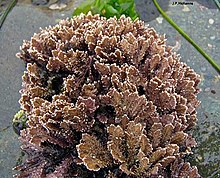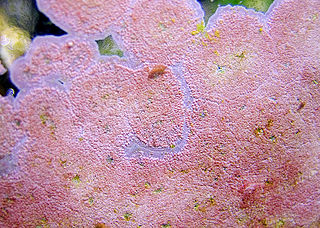
Coralline algae are red algae in the order Corallinales. They are characterized by a thallus that is hard because of calcareous deposits contained within the cell walls. The colors of these algae are most typically pink, or some other shade of red, but some species can be purple, yellow, blue, white, or gray-green. Coralline algae play an important role in the ecology of coral reefs. Sea urchins, parrot fish, and limpets and chitons feed on coralline algae. In the temperate Mediterranean Sea, coralline algae are the main builders of a typical algal reef, the Coralligène ("coralligenous"). Many are typically encrusting and rock-like, found in marine waters all over the world. Only one species lives in freshwater. Unattached specimens may form relatively smooth compact balls to warty or fruticose thalli.

Mikael Heggelund Foslie was a Norwegian botanist and algaeologist. Foslie was curator of the Royal Norwegian Scientific Society Museum in Trondheim.
Acanthophora is a genus of marine red algae in the family Rhodomelaceae.There are 26 species names in the AlgaeBase database at present, of which 7 have been flagged as currently accepted taxonomically.
Phymatolithon is a genus of non geniculate coralline red algae, known from the UK, and Australia. It is encrusting, flat, and unbranched; it has tetrasporangia and bisporangia borne in multiporate conceptacles. Some of its cells bear small holes in the middle; this distinctive thallus texture is termed a "Leptophytum-type" thallus surface, and has been posited as a taxonomically informative character. It periodically sloughs off its epithallus, reducing its overgrowth by algae by as much as 50% compared to bare rock.

Rhodomelaceae is estimated to be the largest red algae family, with about 125 genera and over 700 species.

Corallina is a genus of red seaweeds with hard, abrasive calcareous skeletons in the family Corallinaceae. They are stiff, branched plants with articulations.
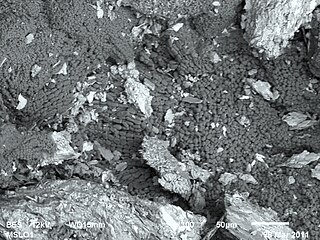
Lithophyllum is a genus of thalloid red algae belonging to the family Corallinaceae.

Porolithon is a genus of red algae comprising 24 species. The Porolithon are the primary reef building algae. When coral reefs reach sea level, the corals break under the high energy impact of the waves, while the coralline red algae, primarily Porolithon, continuing building and cementing the reef structure.

Galaxaura is a genus of thalloid red algae.

Galaxauraceae is a family of red algae (Rhodophyta) in the order Nemaliales.
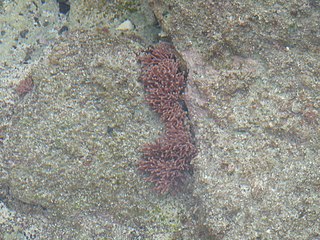
Amphiroa is a genus of thalloid red algae under the family Corallinaceae.

Jania is a genus of red macroalgae with hard, calcareous, branching skeletons in the family Corallinaceae.

Laurencia is a genus of red algae that grow in temperate and tropical shore areas, in littoral to sublittoral habitats, at depths up to 65 m (213 ft).

Desmarestia is a genus of brown algae found worldwide. It is also called acid weed, acidweed, oseille de mer, sea sorrel, ウルシグサ, stacheltang, mermaid's hair, landlady's wig, or gruagach. However, 'sea sorrel' can also specifically refer to Desmarestia viridis. Members of this genus can be either annual or perennial. Annual members of this genus store sulfuric acid in intracellular vacuoles. When exposed to air they release the acid, thereby destroying themselves and nearby seaweeds in the process. They are found in shallow intertidal zones.
Sporolithon is a genus of red coralline algae in the family Sporolithaceae, in the order Corallinales.

Amphiroa beauvoisii is a species of thalloid red algae in the Corallinaceae family. It is widely distributed across the world, and can be found attached to rocks in intertidal areas. Individual organisms consist of a base of calcified material, tissue in the shape of branching fan-like planes growing out of it. It exhibits a wide range of morphologies based on where it is found, as well as different reproductive behaviors based on season and location.
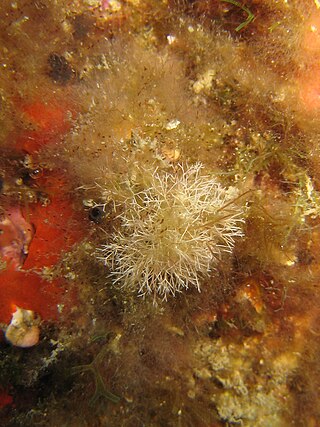
Liagoraceae is a family of red algae (Rhodophyta) in the order Nemaliales. The type genus is LiagoraJ.V.Lamouroux.
